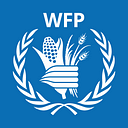Syrians in Lebanon Back on track
How the European Union is helping Syrian families in Lebanon
Once a bustling transport link to Syria, the 400 kilometre Lebanese train system was a vital thoroughfare. But since the Lebanese civil war in the 70s, the country’s train tracks serve no function. Overgrown, built upon and partially looted for scrap, now they are hard to see and have blended into the background and fond memories of train travel are just memories.
On the Beirut to Damascus stretch which runs through the middle of Beirut’s busiest nightclub district, a Syrian refugee family lives in two rooms on the ground floor of a concrete building next to a blaring generator. Far from the bucolic Syrian suburb that the children used to play in, the house on the tracks is their temporary home.
Aman left Syria in 2012 with her children. They crossed the border, registered with the United Nations Refugee Agency (UNHCR), and took their papers to Beirut, looking for work and wait until Syria was safe to return to.
“We had nothing,” explained Aman. “No food, no idea what was happening, it took years to find a school for the children. They’re so far behind now.”
The family began receiving food assistance from the World Food Programme (WFP) soon after they arrived in Lebanon. First it came as food parcels, then paper vouchers as the operation evolved more efficiently, then an electronic card where funds were transferred to be spent in contracted shops. Now, Aman receives multi-purpose cash assistance for food, but it also covers her family’s other basic needs.
“Now we are back on track,” explained Aman. “We can afford chicken twice a month and vegetables every week now.”
The family is now receiving a WFP monthly allowance using funding from the Humanitarian Aid department of the European Commission (ECHO). With that cash, not only are they buying more food than they could before, but it is also cheaper as they can shop around for the best deals from any shop. Last month they bought an inhaler for 14-year-old asthmatic Wiam, cleaning products for their kitchen and a school uniform for her son Ahmad. The cash is a lifeline that allows the family to meet their immediate needs as well as plan for tomorrow.
“Now we are back on track,” explained Aman. “We can afford chicken twice a month and vegetables every week now.”
WFP began providing multi-purpose cash from ECHO to the most vulnerable Syrian refugees because they are most at risk of being forced to take extreme actions just to survive. The most recent Vulnerability Assessment of Syrian Refugees (VASyR) shows that 96 percent of refugees adopted some sort of livelihood coping strategy — such as begging, early marriage or withdrawing children from school — in order to survive.
“I found a school for the children but still had to beg to be able to buy pencils, books and uniforms. Ahmad loves his uniform and wears it all the time now.”
The vast majority of Syrian refugees rely on humanitarian assistance from WFP as their only reliable livelihood. They are the most vulnerable refugee families and are routinely forced to prioritise their limited incomes in order to survive, often at the expense of their food security and well-being.
The ECHO contribution for food and other needs is a lifeline to desperate families like Aman’s. It is basic, equating to US$2 a day per person for a family of five, but is just enough to keep families like hers on track until that passage back home opens up.
Read more about WFP’s work in Lebanon.

